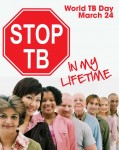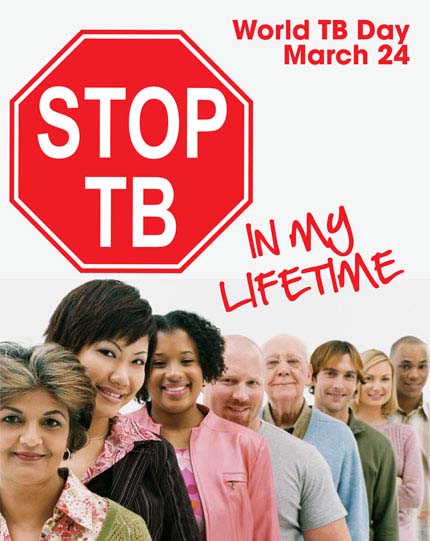
March 24 of each year is World Tuberculosis (TB) Day. It is a day to raise awareness about TB.
What is TB?
TB is a serious disease caused by a bacteria (germ) called Mycobacterium tuberculosis. TB is spread through the air. When someone with active TB disease in their lungs coughs, sneezes, or talks, TB germs can get into the air and float. Other people close to them can breathe these TB germs into their lungs.
TB is a serious disease but it can be cured with the right medicine. TB germs usually attack the lungs. But TB germs can also attack other parts of the body, including the brain, bones and lymph nodes. Only people with active TB disease in their lungs can spread TB germs to other people.
There are two phases of TB: latent TB infection and active TB disease. Both phases can be treated with medicine.
Latent TB infection (LTBI)
People with latent TB infection do not feel sick. The only way to know if TB germs are in their body is to get a TB skin test or TB blood test. If you had BCG vaccine, ask your doctor if you can have the TB blood test.
Active TB
People with active TB disease can get very sick and spread TB germs to others. People with active TB disease may have one or more of the following symptoms: a cough (lasting three weeks or more), coughing up blood, chest pain, weight loss, fever, chills, night sweats, and being very tired for no reason.
Tuberculosis is treated with special antibiotics made just for TB that must be taken for six months or longer.
TB is a Global Health Problem
TB is a widespread health problem around the world. The World Health Organization estimates that 2 billion people are infected with the latent form of TB, or LTBI. In 2010 there were about 9 million people in the world with active TB. Twenty-six percent lived in Africa, 3% lived in the Americas, 59% lived in Asia, 7% lived in the Eastern Mediterranean, and 5% lived in Europe. It is also estimated that 1.5 million people died from TB in 2010.
TB in Minnesota
Each year, about 140 people are diagnosed and treated for active TB in Minnesota. When a doctor diagnoses a patient with active TB, the doctor works with Minnesota’s public health departments to help the TB patient get well. This is because TB is a complicated disease to treat, needing special TB medications over several months. Medicine for TB is free of cost to anyone who lives in Minnesota.
In the United States, including Minnesota, most doctors recommend taking special TB medications to treat LTBI. This helps prevent that person from getting sick with active TB. This may be different in other countries where LTBI is not treated because there are limited resources and they focus instead on treating active TB.
BCG Vaccine
The BCG vaccine is given in many parts of the world where TB is common. BCG helps prevent children from getting severe forms of TB disease. BCG vaccine is not given in the United States because there a low risk of TB infection here.
BCG vaccine & the TB Skin Test
People who have received the BCG vaccine can get the TB skin test if they need to be tested for TB. If the result of the skin test is positive, it is very likely that it is due to a TB infection and not because of the BCG vaccine. There are newer blood tests available that detect only the TB and not the BCG vaccine.
Additional information
The Minnesota Department of Health has fact sheets about TB in English and 15 other languages including: Amharic, Arabic, Bosnian/Croatian/Serbian, French, Hmong, KaRen, Khmer (Cambodian), Laotian, Nepali, Oromo, Russian, Somali, Spanish, Tibetan, and Vietnamese.
The fact sheets are available here.







